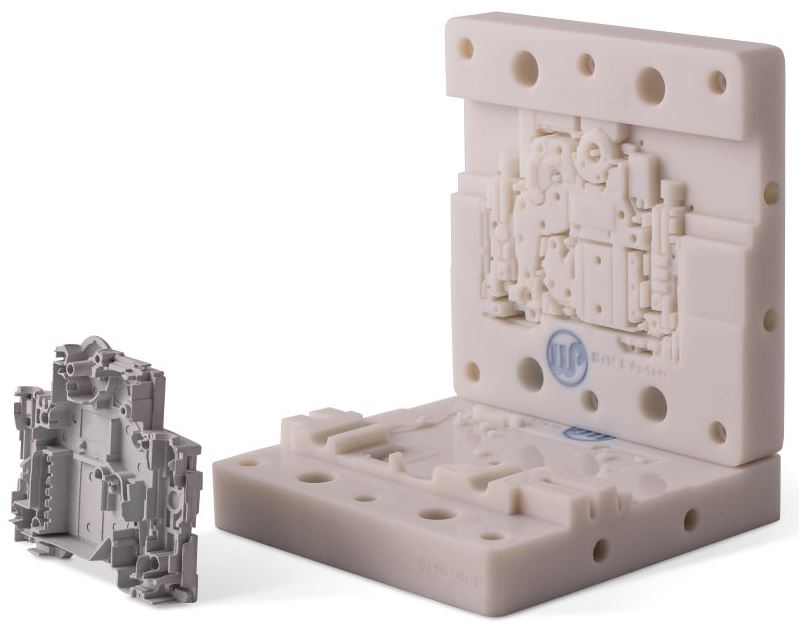For production runs of 1,000 units or more, manufacturing plastic parts using injection molding can be done at a lower cost than with other methods. An example would be American Sign Letters uses injection molds to create their plastic letters.The main investment will be the cost of the mold. Other factors include the amount of material needed for each part and how much time is required to produce each part.

Lead time: 5 – 10 days. Learn more about this process.
What to Consider When Estimating the Cost of Injection Molding
Cost of the mold: To produce a mold can cost a few thousand dollars to tens-of-thousands of dollars. The larger the mold needed and the more complicated the product design is, the costlier the mold will be.
What type of material is needed to make the mold? Molds are commonly made of either aluminum or hardened steel, steel being the more costly material.
Another consideration is the cost of the mold is the surface finish you are interested in having with your end-product. The more polish of a finish needed, the higher the cost of making a mold will be.
As a general idea of the cost, a mold to produce a part 8″ X 8″ X 1/8″ would cost approximately $30,000.
Cost of molding material: Depending on what your product or part will be used for will determine the grade of plastic needed for production. For a common, middle-grade plastic, you can reasonably assume that your cost will be about $5 a pound (1/2kg).
Machine and labor costs: Machine and labor costs are figured by how many of your parts can be produced each hour. Apart from the size of the above-mentioned example takes about 80 seconds to produce. That means that a machine can produce 45 units an hour.
Hourly machine cost and labor wages are largely a matter of geographical location.
Putting it all together: The cost of part 8″ X 8″ X 1/8″ made of a middle-grade plastic would cost about $2 each for a production run of 20,000 units. That is considering the mold cost $30,000 and machine and labor costs are $30 an hour.
Benefits & Limitations of Injection Molding
Positives:
- It is the most cost-effective manufacturing method of producing high-volume production runs of identical plastic parts.
- A substantial variety of plastics with varying physical properties are available to meet specified requirements.
- High productivity of a repeatable process. An average production cycle is about 60 seconds.
Negatives:
- The initial start-up cost is expensive. It is only suitable for high-volume production runs.
- Design changes after a mold are made are expensive.
- The minimum delivery time is about one month, depending on the complexity of design and production volume.
Rules of Thumb
- Use 3D printing or CNC machining to make a prototype and finalize your design before you have an injection mold made.
- The simpler the geometry of a part, the cheaper it will be to produce a mold. Do not make your part more complex than necessary.
- For the best results, keep wall thickness constant, round all corners, and design draft angles for all verticals.
Injection molding is economical for manufacturing volumes of 1,000 units plus. With production needs less than 1,000 units, 3D printing, and CNC machining are more economical. Sheet metal is also economical for high manufacturing volumes of 1,000 units plus.
Interesting related article: The Basics – What is Injection Molding? How Does it Work? What is it Used For?

